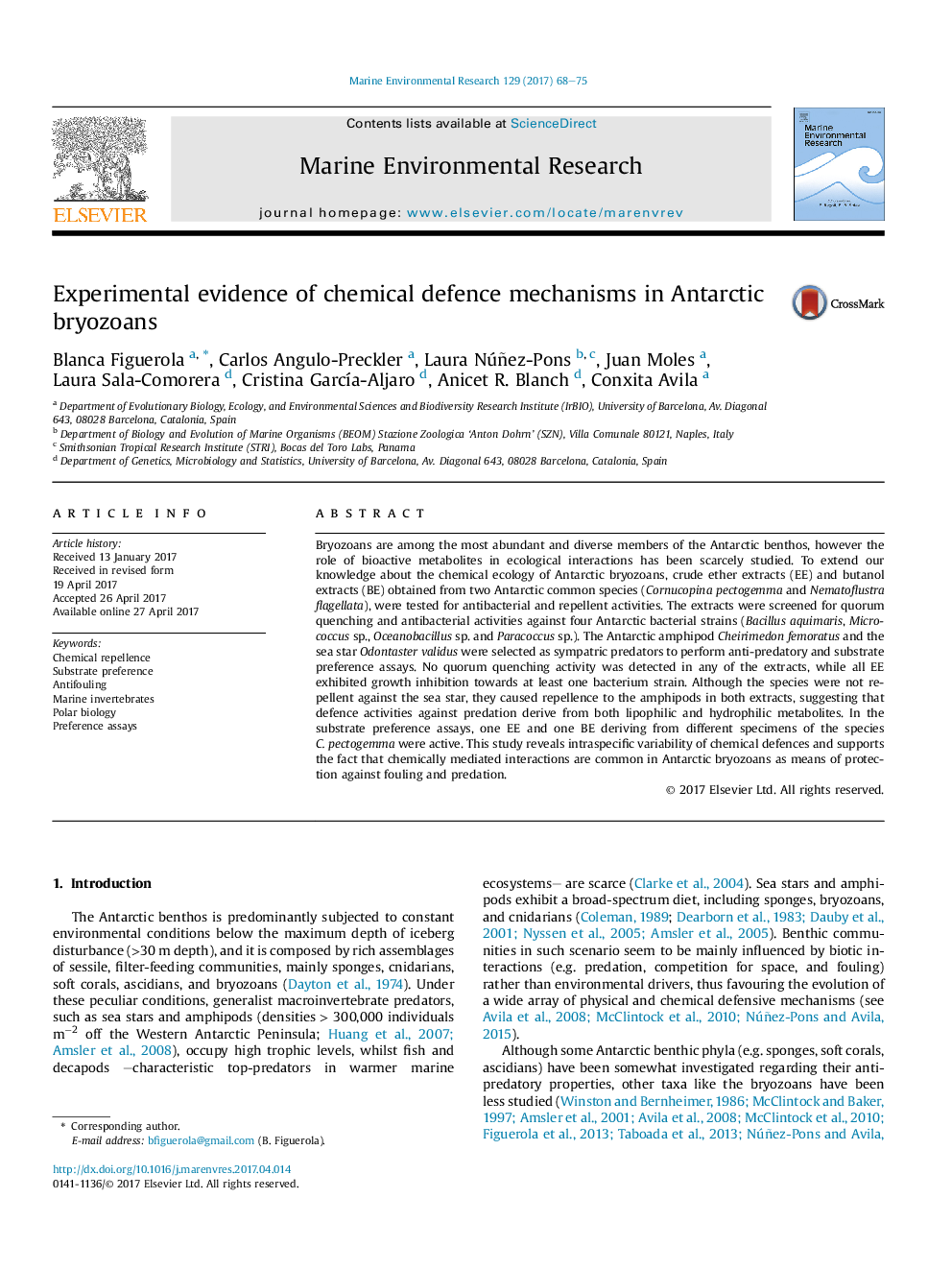| کد مقاله | کد نشریه | سال انتشار | مقاله انگلیسی | نسخه تمام متن |
|---|---|---|---|---|
| 5766193 | 1627554 | 2017 | 8 صفحه PDF | دانلود رایگان |
- Both bryozoan species caused repellence to the amphipods.
- All ether extracts exhibited growth inhibition towards at least one bacterium strain.
- Our results showed intraspecific variability of chemical defences.
- The study supports chemical interactions are common in Antarctic bryozoans.
Bryozoans are among the most abundant and diverse members of the Antarctic benthos, however the role of bioactive metabolites in ecological interactions has been scarcely studied. To extend our knowledge about the chemical ecology of Antarctic bryozoans, crude ether extracts (EE) and butanol extracts (BE) obtained from two Antarctic common species (Cornucopina pectogemma and Nematoflustra flagellata), were tested for antibacterial and repellent activities. The extracts were screened for quorum quenching and antibacterial activities against four Antarctic bacterial strains (Bacillus aquimaris, Micrococcus sp., Oceanobacillus sp. and Paracoccus sp.). The Antarctic amphipod Cheirimedon femoratus and the sea star Odontaster validus were selected as sympatric predators to perform anti-predatory and substrate preference assays. No quorum quenching activity was detected in any of the extracts, while all EE exhibited growth inhibition towards at least one bacterium strain. Although the species were not repellent against the sea star, they caused repellence to the amphipods in both extracts, suggesting that defence activities against predation derive from both lipophilic and hydrophilic metabolites. In the substrate preference assays, one EE and one BE deriving from different specimens of the species C. pectogemma were active. This study reveals intraspecific variability of chemical defences and supports the fact that chemically mediated interactions are common in Antarctic bryozoans as means of protection against fouling and predation.
Journal: Marine Environmental Research - Volume 129, August 2017, Pages 68-75
